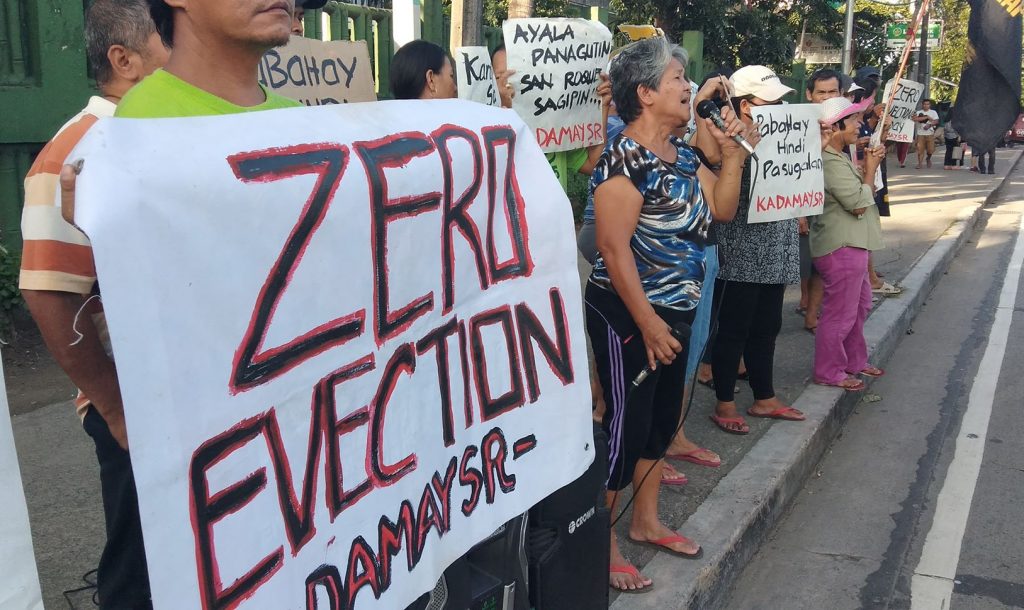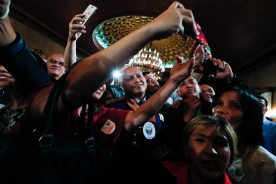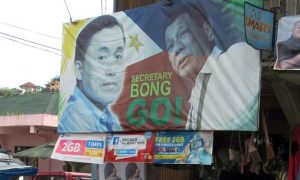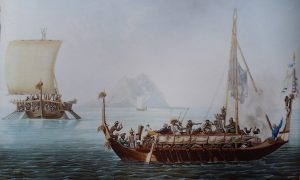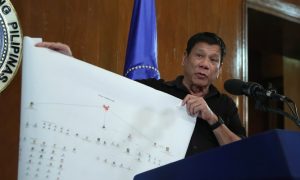In the very heart of the dense urban jungle that is Quezon City lies an unusual sight: Sitio San Roque, one of the Philippines’ largest informal settlements, walled off by corrugated iron sheets from the city’s skyscrapers and highways. It’s a community of approximately 20,000 residents who’ve built their homes on land owned by the National Housing Authority (NHA), all facing eviction to make way for the establishment of a new commercial business district. But it’s also a symbol of something greater: San Roque’s fight for survival is reflective of the nationwide push for forced evictions, and an insatiable transnational drive for development that displaces poor urban workers from the cities that depend on their labour. San Roque’s decade-long resistance against eviction has become an inspiration for other urban poor communities who are also struggling for subsistence in the city; its fate can turn the tide of the struggles of other urban poor communities in the Philippines. And, importantly, it’s disrupting the government’s attempts to erase the unwanted poor, and subverting a narrative of development for the few at the expense of the many.
This year, the community has faced an escalating barrage of new methods employed by the Duterte regime to tear their homes down. Situated in the highly-coveted centre of the city along the Epifanio Delos Santos Avenue (EDSA), San Roque is the proposed location of a high-profile development, granted to corporate giant Ayala Land Inc (ALI) in a deal ratified by the Quezon City Government’s Comprehensive Land Use Plan of 2011.
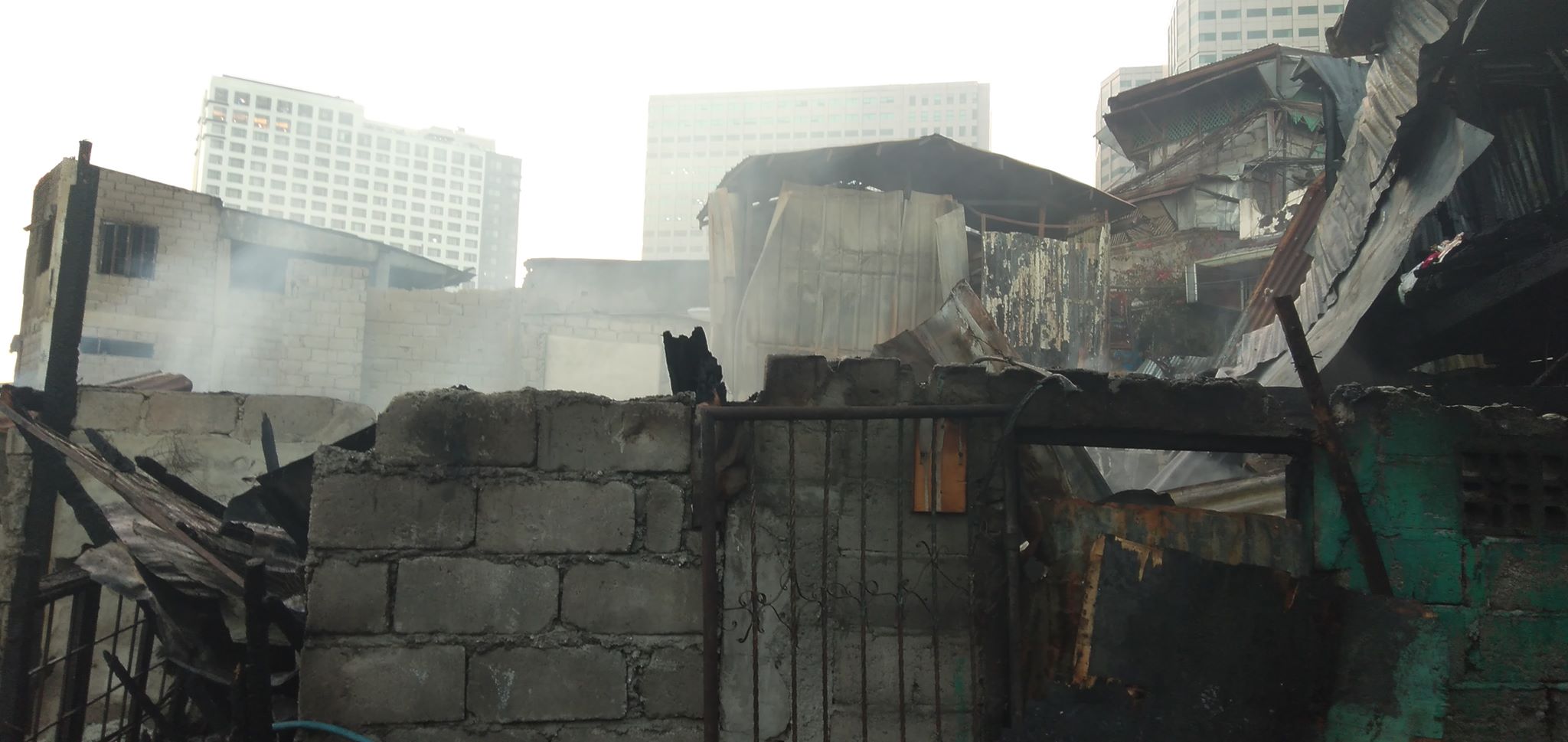
Photo Credit: Michael Beltran
The standoff between the urban poor, the government and Ayala Land Inc has been ongoing for almost a decade. Members of the San Roque community have organised themselves under the Kalipunan ng Damayang Mahihirap (Kadamay), a national alliance of Filipino urban poor, in defence of their homes. Apart from assembling barricades to fend off demolition threats, San Roque residents have also been learning to engage in dialogues with the local government in pursuit of their right to affordable and decent mass housing.
San Roque is one example of a phenomenon reproduced across the developing world. The development of a city centre necessitates the existence of a periphery–occupied by migrants from rural areas with fewer economic opportunities, they serve as the antithesis to the infrastructure development and investment capital touted as ‘progress’. Hence, the city becomes a contested space: business conglomerates and owners of capital are physically juxtaposed against the urban poor and others who generate capital through wage labour. San Roque, like all other slum-peripheries, instantiates the contradictions inherent in the narrative of national development, and offers a model for resistance to it.
A history of San Roque
Chairperson of Kadamay San Roque Estrelieta Bagasbas, called “Ka Inday” by the community, traces the history of San Roque back to the 1980s. Now 66 years old, Ka Inday has been in San Roque since 1983, one of the first 25 settlers in the area. She was 30, then, and recalls the rice fields and cogon grass landscape with aratiles and guava trees. The grasslands had been used as a “salvage” dump (“salvage” being a colloquial Filipino term popularized during Martial Law which meant state-sponsored summary executions). The exodus of Ka Inday’s family to the city was prompted by financial need. In 1983, Ka Inday and other immigrants cleared the land, and planted and sold vegetables. Off-season, she would sell rice cakes along EDSA.
The immigrants who have inhabited the margins of city centres are active agents in the transformation of the city space. Ka Inday’s personal history is inexorably tied to the history of San Roque, which in turn is part of a greater national narrative. She recounts how members of the San Roque community joined the mass protests against the Marcos dictatorship until the ouster of Ferdinand Marcos in 1986. Cory Aquino’s presidency promised democratic governance and better economic prospects for Filipinos, but neither were realised for the urban poor. Basic social services remained elusive and regular employment was still difficult to come by under Aquino’s term.
Talks for the development of a commercial business district in this area have been on the table since 2008, with the contract awarded to Ayala Land Inc after public bidding. The ₱ 22-billion project is a joint venture between Ayala Land Inc and the National Housing Authority (NHA) to develop 29.1 hectares of North Triangle.
San Roque continues to be threatened by demolitions, which have been countered by protests from the community. The government has responded to these protests with the deployment of police forces which have violently dispersed the protesters’ barricades. Since 2010, residents of San Roque have barricaded their community, and resisted and protested the demolitions by marching to the offices of the NHA. Demolitions resumed in 2013 and 2014, with the last wave of police deployment numbering 700 officers. 500 homes were destroyed, leaving 200 families homeless. Kadamay reports that the last confrontation with the police killed a local, Resty Torres, who died of tear gas suffocation. It also saw the arrest and torture of 11 activists and 2 minors, and injured 11 children. Apart from this, residents of the community suspect state-perpetrated arson as the main reason for the 11 major fires which occurred from 2000 to 2019.
Cityscape
The city is symbolic of the ideal of a better economic existence. Waves of internal migrations to the city provide a constant influx of inexhaustible cheap labour from a rural reserve army. On the other hand, the creation of city centres aims to project the absence of poverty and of people regarded as urban refuse, such as squatter colonies and the urban poor.
The resident vendors, drivers, construction workers and other minimum wage labourers animate the community of San Roque. The Filipino bayanihan spirit is thriving in San Roque’s own community traditions. For example, during Christmas residents leave buckets outside their houses where other people would drop coins.
Consequently, San Roque is a site of disruption of the hegemonic ideals of transnational space which seeks to erase poverty whilst also necessitating it for a continuous supply of reserve labour force. It serves as a counter-narrative to the affluence of malls and Business Process Outsourcing (BPO) hubs surrounding it. Situated along EDSA, which may be considered the spine of the city, San Roque is a hot target for real estate development because of its land value. This reveals the primacy given to land use for commercial purposes over community life.
Despite disinformation, social media in the Philippines remains a space for genuine grassroots mobilisation
Despite the rise of disinformation innovations, social media still holds genuine democratic potential.
Ka Inday explains that many blue-collar workers from Avida Towers in Vertis North reside in San Roque. She notes that the irony of the development of a commercial business district is that it displaces the slum-dwelling minimum wage earners who are the lifeblood of a city which relies on the manual labour of the urban poor, the very people it is trying to evict. “It is progress and development at the expense of the poor,” she says, as the urban poor are usually depicted as a menace to society.
While the government has offered relocation housing in areas such as Montalban, Rizal, these relocation sites are far from means of employment, lacking in basic amenities such as water and electricity, and are inaccessible to basic social services such as education and health care. Many of those who were relocated to these areas have eventually returned to living in shanties in the city due to its distance from the city centre and hence, their jobs.
Demolition under Duterte and prospects of the struggle in San Roque
According to 2011 statistics from the National Economic Development Authority there are a total of 1,502,336 informal settler families throughout the country. Kadamay concludes that 97.5% of these families are under threat of demolition or eviction. Apart from the establishment of commercial business districts, President Rodrigo Duterte’s Build Build Build Programme has aggravated evictions and displacement of informal settlers throughout Metro Manila and other urban areas in the country.
Ka Inday laments the underhanded methods used to disrupt the unity of the San Roque community as these have been effective in reducing overall resistance. Pocket demolitions have created rifts amongst residents as other members of the community become more difficult to mobilise when only a few are affected. Apart from this, the government has enticed some residents to self-demolish their tenements in exchange for cash ranging from ₱ 5,000 to ₱ 32,000, which some informal settler families have readily accepted. Those who have agreed to self-demolish their homes been have transferred to official relocation sites with neither water nor electricity, but have eventually resettled elsewhere due to the need for accessibility to employment and basic social services.
Nonetheless, Ka Inday remains optimistic regarding the struggle of their community. Kadamay has crafted an alternative Community Development Plan (CDP). The CDP is in pursuit of the core provisions of the Urban Development and Housing Act of 1992 approved during Cory Aquino’s presidency, which includes socialised housing. Kadamay is proposing an inclusive programme of city development for the urban poor, encompassing affordable mass housing for urban poor and minimum wage earners and accessibility to basic social services such as public education and health care. It also calls for a stop to demolitions until dialogues between the community’s residents and the local government have occurred.
Infrastructure development and the establishment of commercial business districts serve to facilitate the movement of capital. Hence, cityscapes are laid out with profit as the priority and little thought to those on the fringes of society. In turn, the peripheries of city centres themselves are sites of subversions to the government’s myth of development. Situated in these sites of subversions are those who breathe life into the city, willing to oppose peddled narratives of progress in exchange for genuine, inclusive growth.
 Facebook
Facebook  Twitter
Twitter  Soundcloud
Soundcloud  Youtube
Youtube  Rss
Rss 